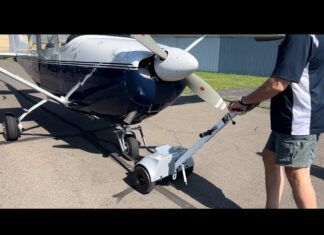MORE ON HIDDEN DAMAGE
I enjoyed your article “No Damage History: And Other Sales Lies” in the December 2021 issue of Aviation Consumer, although I didn’t feel real good about having a photo of my Cherokee 180 on the page right under that title. (Tongue in cheek.)
We’ve owned the airplane for 30 years and that pile of money you mentioned has already been spent bringing it up to modern specs—and the airplane isn’t for sale, and likely won’t be prior to my estate sale.
I agree with much of what Rick Durden had to say in the article, but airplanes like my 180 are close to 70 years old, and even if they have had good maintenance, expensive things are going to pop up going forward. For instance, I’m an A&P and I have always done the best I can to maintain and inspect the plane meticulously. When SEL-55-01—the service letter requiring inspection of the stabilizer and tail cone—came out, I followed it to the letter and found no issues. That service letter allows the inspection to be completed without removing the vertical and horizontal stabilizer. Later, when the FAA issued an AD calling for the inspection per SEL-55-01, I decided to take a closer look and removed the entire empennage so that I could see things more clearly. I found a sheared rivet, cracked stabilizer reinforcement angle and internal corrosion in portions of the horizontal stabilizer that are the items the SEL was designed to detect, but were not apparent without disassembling the tail. I would not have been lying to a prospective buyer when I told them the inspection had been completed, but my closer inspection caused me to completely disassemble and repair the horizontal stabilizer. Even though I was equipped and qualified to do that work myself, it was expensive.
Anyone who buys an airplane, especially a 67-year-old one, needs to understand that even the best prebuy evaluation isn’t going to keep them from having to deal with aging airplane issues down the line.
Mike Todd – via email
PANEL PLANNER 101
I love your panel upgrade column you’ve been running in Aviation Consumer. It’s a huge service, and the panels you have been dissecting have given me lots of ideas on how I might proceed with upgrading an old Cessna 180 I’ve been restoring. I’ve spoken with several avionics shops here in the Midwest and all of them keep pushing high-end equipment that might not serve my mission with this airplane, which is float flying and kicking around the backwoods in occasional light IFR, but mostly VFR.
Why can’t shops present more budget upgrades to better suit the mission? Keep up the great work.
Robert Scott – via email
Our goal with the Panel Planner 101 feature is to better prepare our readers when they deal with shops. Having a few options in mind beforehand usually brings a better buying experience.
While we’re talking about the column, we goofed in the Grumman planner in the February 2023 issue—calling Garmin’s latest GPS/comm the GNC 255 (which is a navcomm). It’s the GNC 355 we meant—one of the better options for a panel that needs the utility of a WAAS GPS and a built-in comm radio.
Got a panel that needs some planning? Drop us a line with high-res photos and we’ll noodle it with you.


